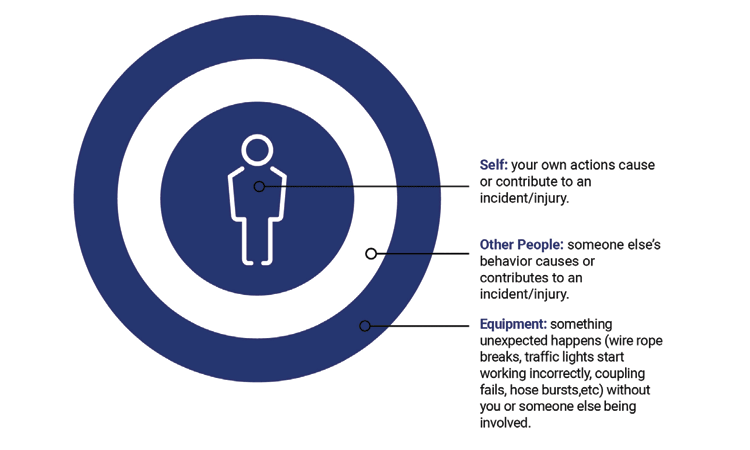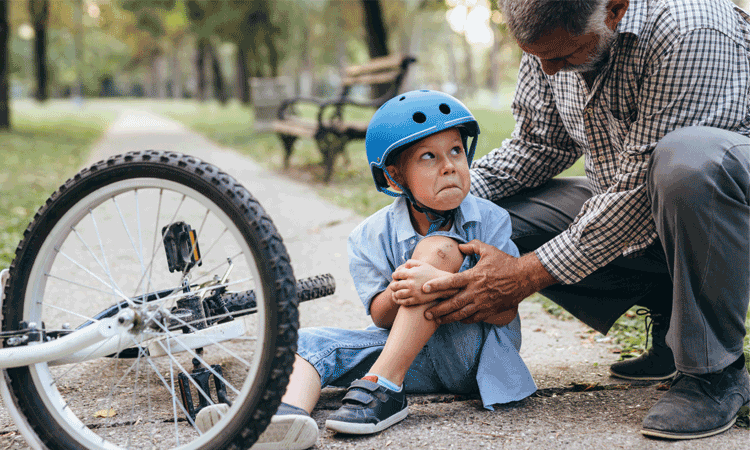People get hurt on a fairly regular basis. And we’ve been doing it all our lives. Young children get hurt 15 to 25 times per week. That’s 5,000 injuries you can barely remember. Many of them were minimal, to be sure.
Unfortunately, some were a bit more serious, where a kiss and a Band-Aid® weren’t enough.
Children ages 5 to 12 don’t get hurt quite as often – maybe only 2 to 4 times per week.
That’s still another 1,000 injuries or so. As kids grow older, the injuries continue.
So, before high school is over, most people have already experienced 6,000 – 7,000 unintentional injuries.
Hopefully as an adult, you are not hurting yourself quite as often as when you were a child or in high school. Maybe you are down to one injury per week or maybe only one per month. But how many people do you know who never have a bruise or a cut for a whole year?
And again, not all of these injuries will be minimal. Some will be minor (sprains, stitches, second-degree burns, mild concussions, etc.), some will be major (fractures,dislocations, torn or severed ligaments, dismemberment,etc.) and some could be fatal. Some will happen on the road. Some will happen at home and, of course, some will happen at work.
During the last 20 plus years, I have asked more than 100,000 people in hundreds of different companies how many of their injuries were caused by the equipment or car doing something unexpected. The normal positive response has been about 2 to 5 percent. Then I asked how many times the “other guys” doing something unexpected was a factor. The normal positive response has been 5 to 15 percent. But for both questions, most people could think of only one example. What’s left is the “self-area” (see figure below).

In other words, if it wasn’t “the equipment” or “the other guy” doing something unexpected to trigger the chain of events that led to your injury, then the unexpected source had to be “you.”
Did you intend to hurt yourself? Not likely!
So, it must have been an error, miscalculation, misjudgment, etc. on your part that triggered the chain of events.
Not that this is new to parents of small children. When your child comes up the stairs crying, most parents ask, “Oh, did you hurt yourself?” Quite often you don’t even have to ask because the child is already volunteering it:

“[Sob, sob] …I hurt myself… [wail, wail].”
Imagine asking an experienced tradesman coming into the first aid room, “Oh, did you hurt yourself?” (Personally, I wouldn’t recommend it.) So, when over 95% of the unexpected events are in the self-area, and you start thinking about how many were miscalculations vs. errors, most people realize that most of their injuries were errors like “didn’t see it” or “didn’t look” vs. miscalculations.
What causes people to make these errors? Well, lots of things. But if you asked 100,000 people, the number one thing you would hear would be “rushing.” You will also hear about fatigue, frustration, and complacency. You might hear about other states as well, but can you think of an injury – not caused by “the equipment” or “the other guy” doing something unexpectedly – where you weren’t rushing, you weren’t frustrated, you weren’t overly tired, or you hadn’t become so complacent with the hazards that you weren’t even thinking about the risk anymore?
Now, can you think of a time when you’ve been injured – not caused by the equipment or the other guy doing something unexpectedly – where you were actually looking at what you were doing, thinking about what you were doing, you were aware of the line-of-fire and conscious of losing your balance, traction or grip?
In other words, can you think of a time when it wasn’t one of these 4 states:
- rushing
- frustration
- fatigue
- complacency…
…that caused or contributed to one or more of these 4 errors:
- eyes not on task
- mind not on task
- line – of – fire
- balance, traction, grip.
SafeStart will not only help you recognize these state-to-error patterns, but it will also help you learn critical error reduction techniques which can keep you safer at work, at home and on the road. However, that’s only the first step. After you understand the pattern, you will need to learn how to self-trigger on the active states, the ones you can feel in the moment: rushing, frustration, and fatigue. Then you will have to put some effort into improving some of your habits, like moving your eyes first before you move your hands, feet, body, or vehicle. That will help to compensate for complacency leading to mind not on task. You will also need to observe others for state to error patterns to help fight being complacent and finally, start learning from the little mistakes like a loss of balance instead of just learning from a serious fall.

Article by
Larry Wilson, Safestart Author And CEO
Web: http://asia.safestart.com

